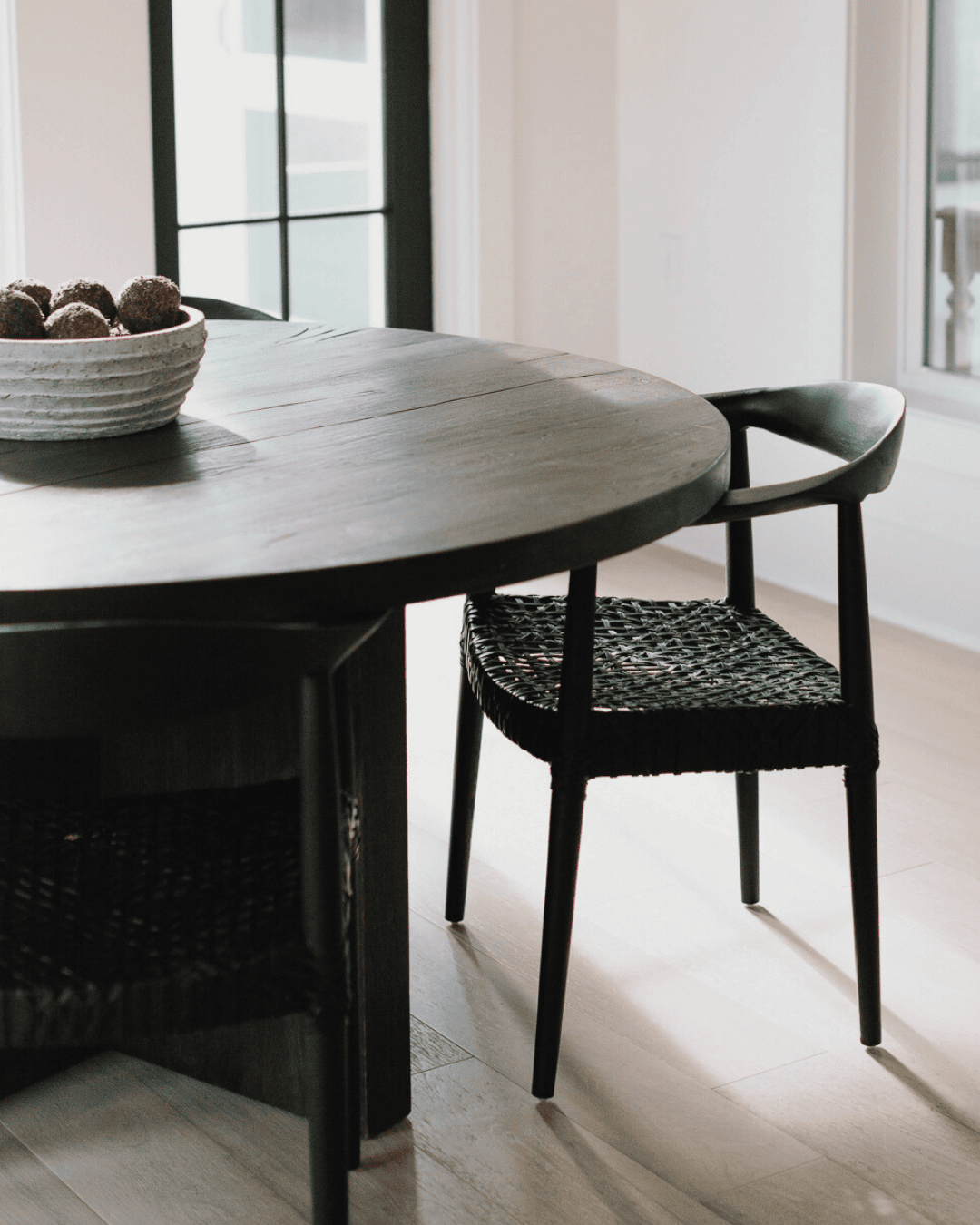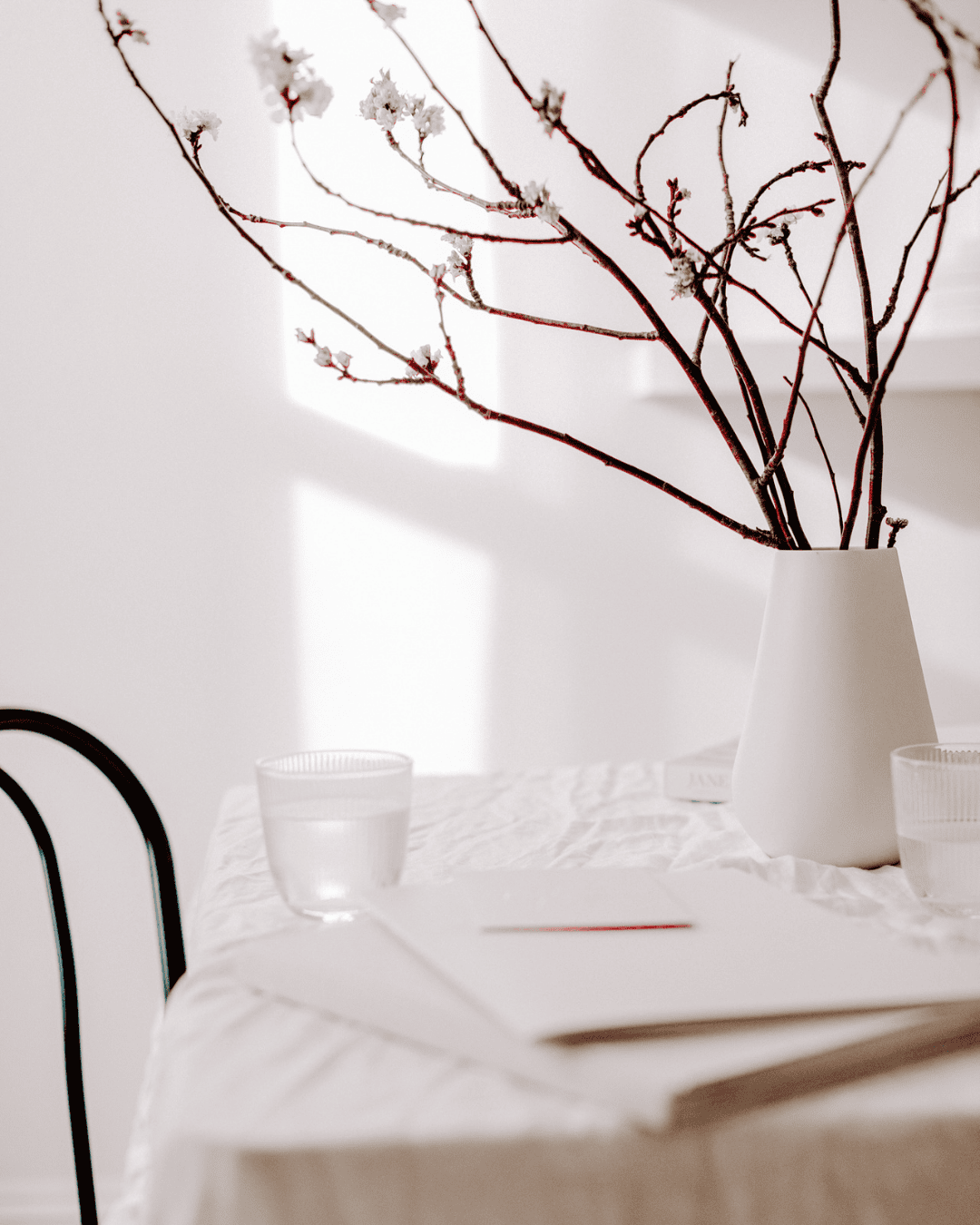10 GOLDEN RULES FOR DESIGNING A SMALL SPACE
How to Maximize Both Style and Function in Any Smaller Room
Decorating a small space can feel like a balancing act—fitting everything you need without overcrowding the room, all while keeping it stylish.
The good news is, small spaces have just as much potential for character and functionality as their larger counterparts.
With a few intentional choices, you can create a space that’s practical, elevated, and personal.
Let’s explore 10 tried-and-true techniques!
01. UTILIZE Vertical Space
When you can’t expand outward, go upward.
Walls are often underutilized in small spaces, but they hold so much potential. Install floating shelves for books or decor, mount hooks for hanging items like baskets or functional items, and opt for tall bookcases to draw the eye upward, making the room feel taller.
You can also create a functional focal point by combining wall storage with aesthetic touches, like styling open shelving with a mix of practical items and decorative accents. For instance, display storage baskets alongside framed art or small plants.
Wall hooks can be a great way to add style and clear up floor space
02. Adapt to the Scale
Both oversized furniture and too many small pieces can make a room feel cramped. The trick is to choose furniture that fills your space without overcrowding it. For instance, a sofa with an ottoman could work better than a full-size sectional in a small living room, while a round dining table can open up a tight eating area.
And remember, less is more. I always recommend prioritizing quality over quantity when it comes to furniture and decor—let your space breathe.
Quick Tip: Test layouts before committing to make sure everything fits and flows just right.
03. use Multi-Functional Furniture
When space is limited, every piece of furniture needs to pull double duty. Think ottomans with hidden storage for blankets or board games, sofa beds for guests, or extendable dining tables for when you have company over.
A personal favorite of mine is a sleek console table that doubles as a workspace during the day and a serving station during gatherings. Pieces like this will blend seamlessly into the room’s design while making the most of every square inch. The key here is finding designs that are as beautiful as they are practical.
Quick Tip: Look for furniture with clean lines and timeless aesthetics to avoid a bulky or overly busy look.
A round expandable dining table is the perfect flexible solution for small dining areas
04. Go for Light and Airy Pieces
The shape and style of furniture can also make a small room feel more open. For example, pieces like armchairs or sofas with exposed legs create an illusion of more space in a room. Transparent materials like glass or acrylic can be great options for coffee or side tables as they’re visually lighter.
In terms of color, lighter tones and reflective surfaces help bounce light around the room, making it feel brighter and more spacious. Keeping your furniture and decor minimal and clean-lined ensures the room doesn’t feel overwhelmed. Plus, these choices not only create a sense of openness but also make a room feel thoughtfully designed.
Pro tip: Pair airy furniture with warm accents like a cozy throw or textured pillows to balance the overall look.
Light and airy furniture and decor pieces create a sense of openness in small spaces
05. Create Zones
In small spaces, especially ones that serve multiple functions, creating distinct zones is key. Rugs can help define areas like a living space versus a dining nook. And don’t forget about lighting—wall sconces can highlight one area while a pendant light creates focus in another.
Also, avoid pushing all your furniture against the walls in an attempt to create space. Instead, float pieces like sofas or chairs away from walls to add depth and flow to the room. For example, a sofa placed in the middle of the room with a console table behind it can act as a natural divider while maintaining an open feel.
06. Add Statement Decor
Just because your space is small doesn’t mean you have to shy away from bold choices. Incorporate one or two statement pieces—like an oversized piece of art, a sculptural lamp, or maybe a striking area rug—to add personality without cluttering the room.
The trick is to keep the rest of the decor more subtle so your statement piece(s) truly stands out and the overall look feels cohesive and calm.
Quick Tip: Use your statement pieces to help guide the room’s color palette or aesthetic for an elevated look.
07. plan Storage carefully
Storage can be tricky in small spaces, but it’s also an opportunity to get creative. Focus on functionality first—everything should have a designated spot to minimize clutter and maximize efficiency. Explore hidden storage options under the bed, behind doors, or built into furniture. Custom built-ins, like a bench with hidden compartments, are also a great way to make every inch count.
Pretty storage baskets are one of my go-to’s for keeping everyday items organized while maintaining a polished look. And remember, if you’re using open shelving, style it with intention—mix functional pieces with decorative items for a balanced look.
Quick Tip: Invest in well-made pieces with hidden storage to keep visual clutter at bay.
Tailored built-ins maximize every inch of your small space and add tons of style
08. Keep It Cohesive
Consistency can make even the smallest space feel more expansive. For example, a simple, harmonious color palette ties everything together seamlessly. Sticking to a clear vibe or style will further enhance this flow, ensuring the space feels intentional rather than pieced together.
I like to repeat materials too, for example, if I’m using light wood in a coffee table, I’ll echo it in picture frames or shelving for a curated feel.
Quick Tip: When in doubt, go for neutrals and add more interest with accent colors and textures.
09. Lighting Is Your Best Friend
Good lighting makes all the difference in a small space. Start by maximizing natural light, then layer in artificial lighting to add warmth and functionality. Combine task lighting (like desk lamps), general lighting (such as pendants or flush-mounts), and decorative lighting (like floor and table lamps) to create depth and dimension.
Pro Tip: Mirrors can amplify light—place one near a window or lamp to reflect it and make the room feel brighter and more spacious.
Maximizing natural light is especially important in a small space
10. Avoid Segmentation
Last but not least, remember that the more you break up a room visually, the smaller it will feel.
So instead, aim for a unified look. For example, paint doors and trims the same color as your walls or choose one large art piece instead of several smaller ones to keep things clean and simple.
Quick Tip: Simplify wherever you can to keep the space feeling calm and connected.






